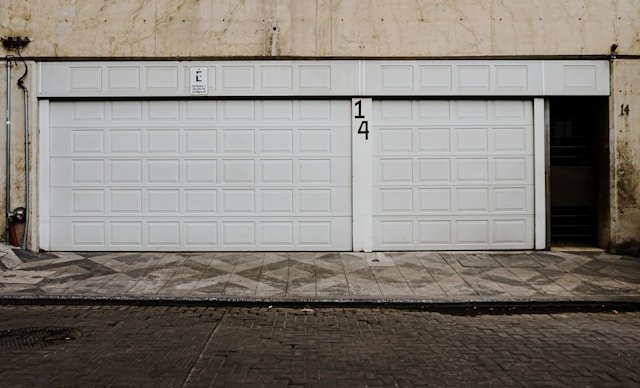16×7 vs. Standard Garage Doors: Key Differences

When it comes to choosing the right garage door size for your home, understanding the differences between 16 x 7 garage doors and standard garage doors is essential. Homeowners often face confusion about what “standard” really means, as sizes can vary based on single-car and double-car needs. In this guide, we’ll break down the exact differences between 16×7 vs. standard garage doors, helping you make an informed decision that matches your home’s design, space, and functionality requirements.
Understanding the Basics of Garage Door Sizes
Before diving into 16×7 vs. standard garage doors, it’s important to know that the term “standard” isn’t always consistent. For single-car garages, common sizes range from 8×7 to 9×7 feet. Double-car garages usually measure around 16×7 feet, but some can be slightly wider or taller depending on custom needs.
What Does 16×7 Mean?
A 16×7 garage door is a door that is 16 feet wide and 7 feet tall. This size is often considered the standard for double-car garages, making it a popular choice for suburban homes. The 16-foot width easily accommodates two vehicles, while the 7-foot height allows for most SUVs, trucks, and cars to enter without clearance issues.
How “Standard” Differs from 16×7
When comparing 16×7 vs. standard garage doors, the difference often comes down to context. In many areas, 16×7 is the default “standard” for double garages. However, in other regions, the standard might be slightly different, such as 14×7 or even 18×7 for larger properties. Single-car garage doors are usually much smaller and cannot fit two vehicles comfortably.
Benefits of a 16×7 Garage Door
The 16×7 garage door offers multiple advantages:
- Ample space for two cars
- Easier entry and exit for large vehicles
- A balanced appearance for wider garage fronts
- Compatibility with most garage door openers and designs
When evaluating 16×7 vs. standard garage doors, these benefits make 16×7 a versatile and often preferred option.
When a Standard Garage Door Might Be Better
While 16×7 garage doors work for many households, some homeowners might prefer smaller standard sizes if they only have one vehicle or want more wall space inside the garage. Smaller doors can also be more cost-effective and easier to maintain in some cases.
Cost Comparison: 16×7 vs. Standard Garage Doors
Price is a major factor in the 16×7 vs. standard garage doors debate. A 16×7 model generally costs more than a single-car standard door due to its size and material requirements. However, if you compare it to other double-door sizes, the cost difference is often minimal, making 16×7 a good balance between space and budget.
Style and Design Options
Whether you choose 16×7 vs. standard garage doors, there’s no shortage of design options. You can find classic raised-panel designs, modern glass panels, wood finishes, or steel construction. The larger the door, the more impact it has on your home’s curb appeal.
Installation Considerations
Installing a 16×7 garage door may require professional expertise, especially if you are upgrading from a smaller standard door. The weight and width of a 16×7 model often require reinforced hardware and precise alignment.
Energy Efficiency and Insulation
When comparing 16×7 vs. standard garage doors, don’t overlook insulation. Larger doors like the 16×7 may let in more air if not properly sealed, so choosing a model with good insulation can help regulate your garage’s temperature and improve energy efficiency.
Resale Value Impact
A well-installed 16×7 garage door can add value to your home by improving curb appeal and functionality. For potential buyers, a double garage that fits two vehicles comfortably is often a selling point, making 16×7 an attractive feature in real estate listings.
Durability and Maintenance
Whether it’s 16×7 vs. standard garage doors, durability depends on the materials used. Steel doors are low-maintenance and long-lasting, while wood doors require more upkeep but offer a warmer, traditional look.
Common Mistakes to Avoid
Some homeowners underestimate the space needed for a 16×7 garage door, leading to clearance issues. Always measure your garage opening accurately and consult with a professional before deciding between 16×7 vs. standard garage doors.
Final Thoughts on Choosing Between 16×7 and Standard Sizes
The choice between 16×7 vs. standard garage doors comes down to your space needs, budget, and design preferences. For households with multiple vehicles, the 16×7 size is often the most practical. For single-vehicle households or smaller garages, a standard single door may be the better fit.
FAQs
1. Is a 16×7 garage door considered standard?
Yes, in many regions, a 16×7 garage door is the standard size for a double-car garage, but “standard” can vary depending on location and builder preferences.
2. What is the difference between 16×7 and other standard garage doors?
The main difference is size. A 16×7 garage door is wider, accommodating two cars, while smaller standard doors usually fit only one vehicle.
3. How much does a 16×7 garage door cost compared to standard sizes?
A 16×7 garage door typically costs more than a single standard door, but prices are similar to other double-door sizes, making it a cost-effective choice for larger garages.
4. Can I replace my standard garage door with a 16×7?
Yes, but it may require widening the garage opening and upgrading the door hardware. Professional installation is recommended for this conversion.
5. Are 16×7 garage doors available in insulated options?
Absolutely. Many 16×7 garage doors come with insulation to improve energy efficiency and temperature control in your garage.






